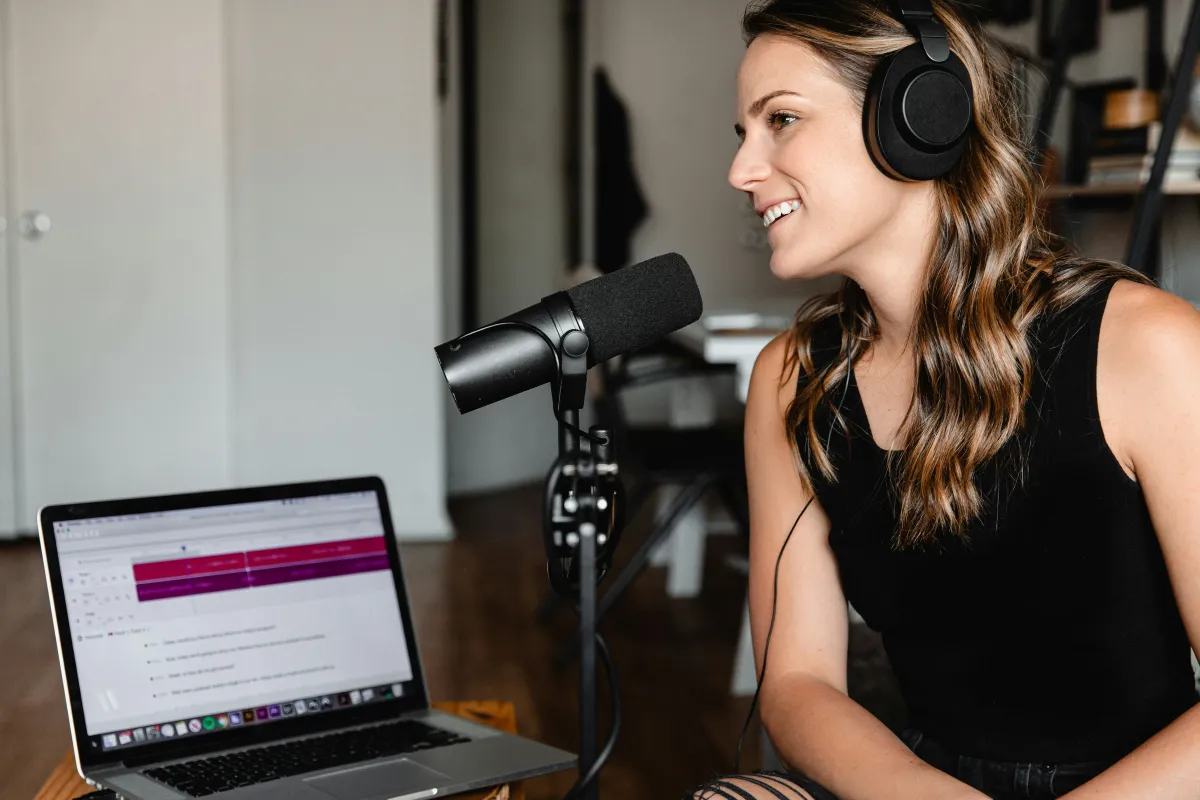Start Your Podcast Journey: A Simple Guide
Embark on your podcasting adventure with ease! Discover the best tools and step-by-step instructions to create your podcast, from crafting compelling content to editing like a pro.

Key Takeaways: Embark on your podcasting adventure with ease! Discover the best tools and step-by-step instructions to create your podcast, from crafting compelling content to editing like a pro. Learn how to engage your audience, distribute your podcast widely, and leverage analytics for growth. Plus, get answers to common podcasting queries in our FAQ section.
Crafting Your Podcast Concept
Before diving into the technicalities of podcasting, it’s crucial to have a clear vision. Your podcast concept is the foundation of your journey.
Tool: MindMeister
MindMeister is an online mind mapping tool that helps in brainstorming and organizing your podcast ideas.
Step-by-Step Guide:
- Sign Up: Visit MindMeister and sign up for a free account.
- Create a New Mind Map: Click on “Create a New Mind Map” and choose a template that suits your brainstorming style.
- Name Your Mind Map: Title it after your potential podcast concept.
- Add Main Topics: Use the central node for your podcast’s core idea, and create branches for different show themes, target audience, episode ideas, etc.
- Expand Ideas: Add sub-branches to dive deeper into each episode idea or theme.
- Use Visuals: Incorporate colors, icons, or images to differentiate between themes or ideas.
- Collaborate: Share your mind map with friends or potential co-hosts for feedback.
Recording Your First Episode
With your concept in place, it’s time to bring your podcast to life by recording your first episode.
Tool: Audacity
Audacity is a free, open-source, cross-platform audio software that’s perfect for beginners.
Step-by-Step Guide:
- Download and Install: Go to the Audacity website, download the latest version, and install it.
- Set Up Your Microphone: Connect your microphone to your computer, open Audacity, and select your microphone from the dropdown menu next to the microphone icon.
- Test Your Levels: Press the record button and speak at a normal volume to ensure the levels are not peaking (staying within the -12db to -6db range is ideal).
- Record Your Episode: Hit the record button again and start recording your episode. Don’t worry about mistakes; you can edit them out later.
- Save Your Project: Regularly save your project by clicking File > Save Project to prevent data loss.
Editing for Clarity and Engagement
Editing is where you polish your recording into a professional-sounding podcast.
Tool: GarageBand (for Mac users)
GarageBand offers a user-friendly interface for editing podcasts, with various built-in tools and effects.
Step-by-Step Guide:
- Import Your Audio: Open GarageBand, select ‘New Project’, and choose ‘Voice’. Then drag and drop your recorded audio file into the timeline.
- Trim and Cut: Use the Split tool to cut out mistakes or unnecessary parts. Simply place the playhead where you want to split and use Command + T.
- Adjust Levels: Use the volume slider on each track to ensure your audio is balanced and clear.
- Add Music and Effects: Use the loop library or import your own music files to add intro/outro music or sound effects. Ensure you have the rights to use any music you add.
- Export Your Episode: Once satisfied, go to Share > Export Song to Disk, choose MP3 format, and save your edited episode.
Distributing Your Podcast
Now that your episode is ready, it’s time to share it with the world.
Tool: Anchor
Anchor is a free podcast hosting service that also distributes your podcast to multiple platforms like Spotify, Apple Podcasts, and more.
Step-by-Step Guide:
- Sign Up: Visit Anchor.fm and sign up for an account.
- Create a New Podcast: Click on ‘New Podcast’ and fill in your podcast details, including name, description, and cover art.
- Upload Your Episode: Click on ‘New Episode’ and upload your edited audio file.
- Add Episode Details: Provide a title, description, and any episode-specific cover art or tags.
- Publish: After reviewing your episode details, click ‘Publish Now’ to make your episode live.
- Distribute: Use Anchor’s distribution features to submit your podcast to various platforms.
Engaging Your Audience and Promoting Your Podcast
Engagement and promotion are key to growing your podcast audience.
Tool: Buffer
Buffer is a social media management tool perfect for scheduling posts, analyzing performance, and engaging with your audience.
Step-by-Step Guide:
- Sign Up: Go to Buffer.com and sign up for an account.
- Connect Your Social Media Accounts: Link your social media profiles where your target audience is most active.
- Schedule Posts: Create engaging posts about your podcast episodes, behind-the-scenes content, or upcoming topics and schedule them for optimal times.
- Analyze and Adjust: Use Buffer’s analytics to see which posts perform best and adjust your strategy accordingly.
- Engage: Respond to comments and messages to build a community around your podcast.
Leveraging Analytics for Growth
Understanding your audience and how they interact with your podcast is crucial for growth.
Tool: Podtrac
Podtrac provides detailed analytics and audience insights for podcasters.
Step-by-Step Guide:
- Sign Up: Visit Podtrac and register for an account.
- Integrate with Your Podcast: Follow Podtrac’s instructions to integrate their tracking with your podcast host.
- Analyze Your Data: Access your Podtrac dashboard to view detailed statistics on listenership, episode performance, audience demographics, and more.
- Use Insights for Growth: Analyze your most popular episodes, listener trends, and demographics to tailor your content and marketing strategies.
FAQ Section
Q: How much does it cost to start a podcast? A: Starting a podcast can be relatively low cost. The essentials are a good microphone and editing software, which can be free, like Audacity. However, investing in better equipment and marketing can increase costs.
Q: How often should I release new episodes? A: Consistency is key. Weekly episodes are common, but the best schedule depends on your capacity to produce content without sacrificing quality.
Q: Do I need a website for my podcast? A: While not strictly necessary, a website can enhance your podcast’s online presence, offering a central hub for your content, show notes, and more.
Q: How can I monetize my podcast? A: Monetization can come from sponsorships, listener donations, merchandise, or premium content. Building a solid listener base is crucial before monetizing.
Embarking on your podcast journey involves careful planning, from conceptualization to distribution and engagement. By following this simple guide and leveraging the recommended tools, you’re well on your way to creating a compelling podcast that resonates with listeners and stands out in the crowded podcasting landscape. Remember, consistency and quality are key to growing your audience and achieving podcasting success.


